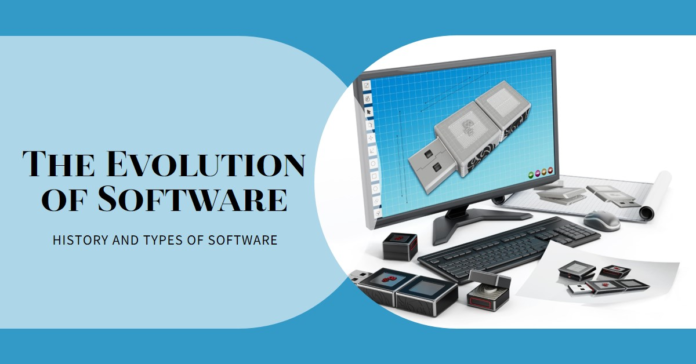Computers need programs to do things for us. These programs are called software. Software makes computers work. The software has a long and rich history of development. It has changed a lot over the years. People have worked hard to make software better and better. They want software to be easy to use and do many things for us. The software runs our digital world today. Its history is very interesting. We use many types of software every day.
The Dawn of Software: Pioneering Minds and Early Innovations

A long time ago, a woman named Ada Lovelace did important work. She worked with Charles Babbage on a machine called the Analytical Engine. Many people says she was the world’s first programmer. Her work helped start the idea of machines that can be programmed. Later, in 1935, Alan Turing’s work also helped build the foundation for computer science and software engineering.

In the beginning, software was written in binary code. This was very hard and complicated work. But in 1948, an important moment happened. The Manchester Baby computer successfully ran the first software stored in electronic memory. This was a big step forward. It helped create more advanced and easier ways to program.
The Rise of Programming Languages: Simplifying Software Development
In the 1950s, new programming languages like FORTRAN and COBOL were created. FORTRAN helped with science. COBOL was useful for business. Later, languages like C, Python, and Java were made. These languages changed how software is made. It became easier and faster to write programs. New ways of programming, like object-oriented programming, also came. Software became more powerful and complex because of these changes.
Software Engineering: A Profession Takes Shape

Developing software is a big task; in fact, it’s its own kind of engineering job. Consequently, in the 1960s, Margaret Hamilton coined the term “software engineering.” Furthermore, important figures like Edsger W. Dijkstra, Fred Brooks, and Donald Knuth emphasized principles for creating good software. For instance, they advocated for keeping code in modules and prioritizing high-quality software. However, in the late 1900s, new ways of making software emerged and gained popularity. These “agile” methods, which allowed teams to work together flexibly, eventually replaced the strict “waterfall” approach.
The Personal Computer Revolution: Software for the Masses
In the 1970s and 1980s, personal computers became accessible to many people. The IBM Personal Computer played a key role in this change. It had an open design. The software was once only for a few and costly. But now, more people can get software easily. This allowed new ideas and creativity in different areas.
The Internet Age and Beyond: Connectivity and Emerging Technologies
The 1990s saw the internet grow big. This helped software gets made in new ways. People could work together. Software code could be shared easily. In the 2000s, mobile apps became super popular. Software became a part of our everyday lives.
These days, software uses cool new tech like cloud computing, AI, and quantum computing. New fields like blockchain, IoT, and extended reality are changing software’s future and being excellent and sustainable matters more now.
Types of Software: A Diverse Ecosystem

Software comes in different types, each with its own purpose. First, some software performs specific tasks. For example, word processors help write documents, and graphic design tools create images. Additionally, big companies use software to manage resources. On the other hand, some software controls computers and devices. Specifically, operating systems and device drivers are examples of such software, which helps computers perform tasks efficiently. Furthermore, programmers use specialized software to create programs, while middleware software connects different software programs to enable communication and data exchange. In conclusion, software encompasses a wide range of types, each playing a unique role in the digital world.
Software can come in different ways. Freeware is free to use. Shareware lets you try it first before paying. Open-source software lets people see and change the code. They can share it, too. Closed-source software doesn’t show the code. Using it requires a valid license.
Conclusion
Software keeps changing with time. Humans are always trying new things. As technology grows, software will stay important. It will change how we live, work, and deal with things around us.


